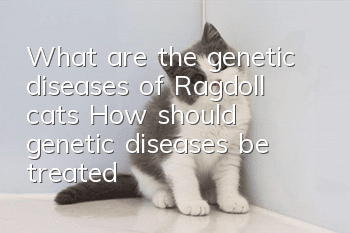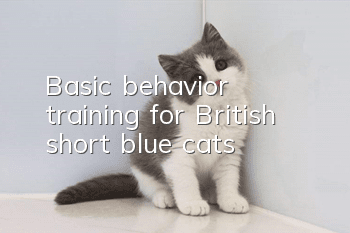What are the genetic diseases of Ragdoll cats? How should genetic diseases be treated?

Ragdoll cat (Ragdoll) is a breed that appeared relatively late. It originated in the 1960s and was bred by Ann. Breed and created by Ms. Ann Baker. All current Ragdoll cats can be traced back to a white long-haired female cat named Josephine. Ragdoll cats have well-proportioned limbs, thick bones, and medium-length coats. Their whole body is particularly loose and soft, like a soft rag doll, hence the name Ragdoll cat. Such a cute Ragdoll cat, the editor also wants to popularize the genetic knowledge of Ragdoll cats from three aspects: its coat color, pattern color and genetic diseases.
Genetic diseases of Ragdoll cats:
1. There is a genetic disease that is prone to occur in the Ragdoll cat population, which is HCM cardiac hypertrophy. This disease is more likely to occur in inbred Ragdoll cats. CutieDolls Ragdoll Cattery has always adopted strict screening of breeding cats and eliminated disease genes through DNA testing, thereby fundamentally eliminating the existence of this disease.
2. Even if there is no possibility of genetic diseases, owners are advised not to relax their vigilance. Please vaccinate Ragdoll cats against feline distemper and rabies vaccines on time and do a good job of internal and external deworming to ensure the healthy growth of little Ragdoll cats. For young Ragdoll cats, owners are asked to pay special attention to keeping warm, especially drying them thoroughly after bathing. Colds can be mild or severe for young Ragdoll cats.
Symptoms of genetic diseases in Ragdoll cats:
Once suffering from hypertrophic cardiomyopathy, Ragdoll cats may die from sudden heart failure, thrombosis, and pulmonary edema, which are also common complications. Many Ragdoll cats even need to go to the hospital regularly to have pleural effusion pumped, and some will also suffer from Paralyzed by blood clots, cats with mild disease may not have any clinical symptoms at first. As the course of the disease prolongs, Ragdoll cats will show symptoms of accelerated respiratory rate, weakness, exercise intolerance, tachycardia and even dyspnea and fainting. Most illnesses are caused by difficulty breathing or acute hind limb paralysis. At this time, hypertrophic heart disease has reached a moderate or even severe state, and the Ragdoll cat may die suddenly.
The incidence of genetic diseases in Ragdoll cats:
Hypertrophic cardiomyopathy can appear at any age. The age at which clinical symptoms appear ranges from 6 months to 16 years old, with an average age of about 5 years. There are also Ragdoll cats clinically diagnosed with HCM at 3 months old, but it is relatively rare. Ragdolls The incidence rate of male cats is significantly higher than that of female Ragdoll cats, with middle-aged male Ragdoll cats having the highest incidence rate.
Treatment of genetic diseases in Ragdoll cats:
Strictly speaking, Ragdoll cats that carry the disease-causing gene Y/HCM1 but have not yet become ill cannot be considered sick cats. Unfortunately, even if it does occur, there is no treatment for the disease based on the current world medical level. There is no way to restore hypertrophic cardiomyopathy to normal, and there is no way to prevent its development. The scary thing about genetic diseases is that they can’tOnce cured, it may be possible to control the pain of the disease and slow down the progression of the disease through drugs and other means.
- Will Ragdoll cats’ fur become darker in winter?
- What kind of special litter box should be prepared for pet cats?
- Why do cats eat dead leaves?
- Is it good to neuter male cats?
- Is it okay for cats to eat one kind of cat food for a long time?
- Will impure folded-eared cats get sick?
- Do cats cry after being abandoned?
- Symptoms and treatments for spontaneous cystitis in cats
- Can hair in a cat's eye come out on its own?
- How to change a timid cat?



